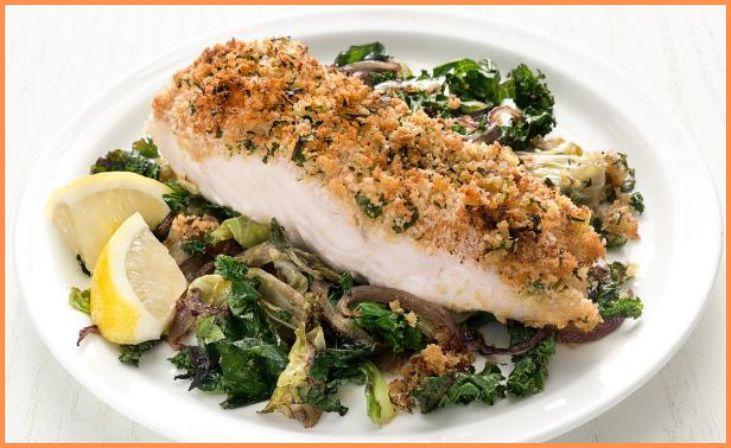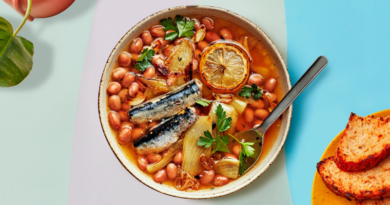Best Tasting Fish In The World – In the diverse world of seafood, the quest for the best-tasting fish is a tantalizing journey influenced by various factors. Defining the pinnacle of taste is subjective, often shaped by cultural, regional, and individual preferences. The spectrum of flavors is broad, with species, environments, and diets playing crucial roles. From the succulent richness of salmon to the meaty allure of tuna, each fish brings its unique essence to the culinary table. This exploration delves into the factors shaping taste, popular choices, and preparation techniques. Grilled, baked, or served raw in sushi, the methods of preparation are as diverse as the fish themselves. Regional variations add another layer to the tapestry, from Asian freshness ideals to Mediterranean herb-infused delights. As we embark on this flavorful journey, ethical considerations and sustainability cast a responsible shadow, urging us to savor the best while ensuring the future of our oceans.
Best Tasting Fish In The World
Salmon

Salmon, celebrated for its rich, buttery flavor, is a favorite among seafood enthusiasts. Known for its vibrant pink-orange hue, this fish offers a succulent and tender texture. Whether grilled, baked, or smoked, salmon’s versatility enhances its appeal. Wild-caught varieties are often preferred for their superior taste compared to farm-raised alternatives. Renowned for its high omega-3 fatty acid content, salmon not only delights the taste buds but also provides health benefits. Whether featured in sushi, salads, or as a main course, salmon consistently ranks as one of the best-tasting and nutritionally valuable fish.
Also, Read – 8 ingredients that will make your grilled cheese even better
Tuna

Tuna, particularly bluefin and yellowfin varieties, is prized for its firm texture and mild, meaty flavor. Often featured in sushi or sashimi, it boasts a clean taste and a rich, almost buttery consistency. Sushi-grade tuna, with its deep red color and exceptional freshness, is particularly sought after. Whether seared, grilled, or enjoyed raw, tuna’s versatility makes it a popular choice for various culinary applications. Its high protein content and omega-3 fatty acids add nutritional value, making tuna a delicious and healthy option for seafood lovers worldwide.
Sea Bass

Chilean sea bass, also known as Patagonian toothfish, is celebrated for its succulent, buttery taste and flaky texture. Renowned for its rich flavor profile, this deep-sea fish is often prepared by grilling, pan-searing, or baking. The thick fillets lend themselves to a moist and tender consistency when cooked properly. With its white flesh and delicate flavor, Chilean sea bass is a favorite in upscale seafood dishes. Despite its popularity, it’s important to choose sustainably sourced options to support responsible fishing practices and environmental conservation.
Halibut

Halibut, known for its mild, sweet flavor and firm texture, is a versatile fish that lends itself to various culinary preparations. With its flaky white flesh, halibut is often grilled, baked, or pan-seared, allowing its delicate taste to shine. This fish adapts well to a range of seasonings and sauces, making it a favorite for diverse recipes. Whether served as a fillet or in tacos and stews, halibut’s lean yet succulent nature appeals to seafood enthusiasts. Sustainability considerations are crucial when choosing halibut to support responsible fishing practices and protect marine ecosystems.
Mahi-Mahi

Mahi-Mahi, with its mild and slightly sweet taste, boasts a firm texture that makes it a popular choice in the culinary world. Also known as dolphinfish, this vibrant fish is often featured in grilling and pan-searing due to its meaty consistency. The white, flaky flesh pairs well with various marinades and tropical flavors. Commonly found in tacos, salads, or served as fillets, Mahi-Mahi’s versatility extends to both casual and upscale dishes. Its oceanic origin and distinct taste contribute to its popularity, offering a delightful seafood option for those seeking a flavorful and nutritious dining experience.
Also, Read – 8 Ways to Turn Table Scraps Into Delicious Meals
Cod

Cod, known for its mild flavor and flaky white flesh, is a versatile fish enjoyed in diverse culinary creations. Whether battered and fried for fish and chips or baked with herbs for a healthier option, cod adapts well to various cooking methods. Its neutral taste makes it an ideal canvas for different seasonings and sauces. With a light texture and wide availability, cod is a popular choice for seafood enthusiasts. This fish is not only delicious but also a good source of lean protein. When selecting cod, consider sustainability practices to ensure responsible fishing and support for healthy marine ecosystems.
Trout

Trout, whether rainbow or brook, is renowned for its delicate, mild flavor and flaky texture. This freshwater fish is often enjoyed grilled, pan-fried, or smoked, allowing its natural taste to shine. With a slightly sweet undertone, trout’s versatility lends itself to various culinary preparations, from simple dishes to gourmet creations. Its tender flesh absorbs flavors well, making it an excellent canvas for herbs and spices. Trout’s popularity extends to both casual meals and fine dining experiences, showcasing its appeal to a wide range of tastes. When sourced responsibly, trout is a flavorful and sustainable choice for seafood enthusiasts.
Red Snapper

Red Snapper, with its mildly sweet and nutty flavor, is a prized fish in coastal cuisine. Recognized for its firm, white flesh, this versatile fish is often grilled, baked, or pan-seared. The delicate taste of red snapper pairs well with various seasonings, making it a favorite for diverse recipes. Commonly featured in seafood stews, tacos, or as fillets, its succulent texture enhances the dining experience. Sourced responsibly, red snapper contributes to sustainable fishing practices. Popular in both casual and upscale settings, red snapper continues to be a sought-after choice for seafood enthusiasts seeking a flavorful and enjoyable culinary experience.
Flounder

Flounder, prized for its delicate, sweet taste and tender texture, is a versatile and popular seafood option. With its mild flavor profile, flounder adapts well to various cooking methods such as baking, broiling, or pan-searing. Often used in dishes like stuffed fillets, its flaky white flesh complements a variety of seasonings and sauces. Flounder’s versatility makes it a favorite for both simple and gourmet preparations. Whether featured in classic recipes or innovative culinary creations, this fish offers a delightful dining experience. As with any seafood choice, selecting sustainably sourced flounder supports responsible fishing practices and environmental conservation.
Conclusion
In the realm of the finest tasting fish, subjectivity reigns, embracing diverse flavors from salmon’s succulence to tuna’s meaty allure. The culinary journey, guided by cultural preferences and preparation techniques, unfolds across global traditions. However, as we savor these oceanic delights, an ethical responsibility emerges—embracing sustainability and mindful choices. The future of our oceans relies on our appreciation for the best tasting fish, urging us to harmonize personal preferences with the preservation of marine ecosystems. With every delectable bite, let our choices echo a commitment to both culinary pleasure and environmental stewardship.
FAQs
The taste of fish is subjective and influenced by factors such as species, environment, and preparation. Some people prefer the rich flavor of salmon, while others favor the meaty taste of tuna or the mildness of cod.
Yes, certain fish are widely regarded for their exceptional taste. Salmon, tuna, cod, and halibut are often praised for their distinctive flavors and versatile culinary applications.
Absolutely. Grilling, baking, and sushi preparation, for example, can enhance or alter the natural flavors and textures of fish. The choice of herbs, seasonings, and cooking techniques plays a crucial role in the overall taste.







